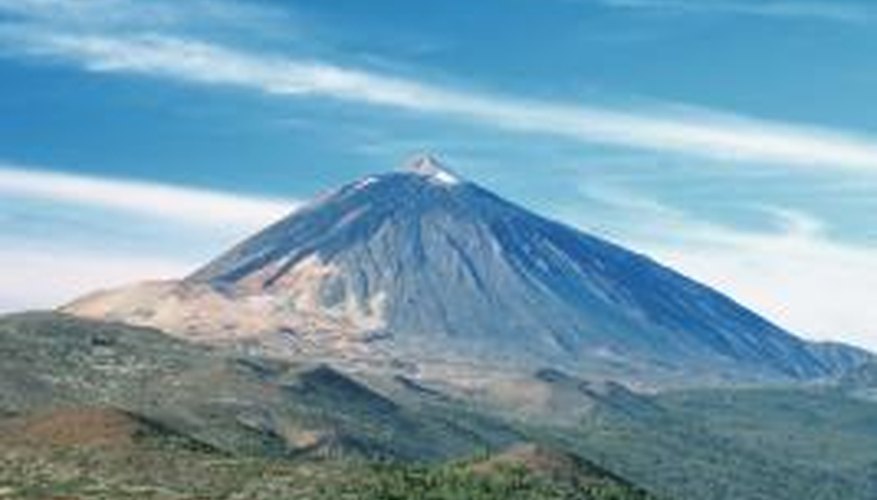Model volcanoes are popular educational tools, because they simultaneously explore geology, chemistry and art. While the chemistry aspect of the volcano (combining an acid with a base) is usually outlined for you in the project and the geological aspect is taught, use your imagination to involve the artistic aspect.
- Model volcanoes are popular educational tools, because they simultaneously explore geology, chemistry and art.
- While the chemistry aspect of the volcano (combining an acid with a base) is usually outlined for you in the project and the geological aspect is taught, use your imagination to involve the artistic aspect.
Once you've created the structure of your model volcano, you need to paint it. This adds a sense of fun and realism to your project. Stay as true to form as possible while painting, even imitating an actual volcano. In this way, you learn more about the science of volcanoes (volcanology).
Paint the entire three-dimensional volcano model brown, extending from the base of the volcano to the tip. Allow the paint to dry.
Mix a drop of white into your brown paint, and sponge over the top third of your volcano, so that the top of the volcano is slightly lighter than the rest.
- Mix a drop of white into your brown paint, and sponge over the top third of your volcano, so that the top of the volcano is slightly lighter than the rest.
Dampen a clean paintbrush with water. Shake excess water from the brush. Use the brush to pull the sponged lighter brown from the top of the mountain to the middle half, so that the colours blend from lightest at the top to darkest at the bottom. Allow the paint to dry.
When drawing the lighter brown colour down the side of the volcano, do so in quick, messy strokes. Lines on the volcano indicate crags or cracks in the rock, helping your volcano to appear more three-dimensional.
Paint the bottom quarter of your volcano green, using back and forth strokes. Allow the paint to dry.
- Paint the bottom quarter of your volcano green, using back and forth strokes.
You may choose not to include green in your volcano. The green represents foliage at the base of the volcano; very active volcanoes often do not have foliage at the bottom.
Dip your brush in green paint. Repeatedly press the tip lightly against the volcano, from the line of your green paint to an imaginary line, 1/3 of the way up your volcano. Allow the paint to dry.
Paint the top fifth or so of the volcano white, to emulate snow. Allow the paint to dry.
Many volcanoes reach high enough in altitude to accumulate snow and ice. The presence of ice (and therefore, white paint) depends on your location, but even volcanoes that are located in tropical climates can have snow on them. For example, the Mauna Kea shield volcano on Mauna Kea, Hawaii, is often covered with snow.
Cover your volcano with acrylic sealer, if desired.
Acrylic sealer leaves a slight shine on the volcano; if you don't want any shine, don't use sealer. Additionally, double-check your volcano, adding paint wherever you want to add details, before you seal it.
- Paint the top fifth or so of the volcano white, to emulate snow.
- Acrylic sealer leaves a slight shine on the volcano; if you don't want any shine, don't use sealer.
TIP
Print pictures of the volcano you want to imitate and paint your volcano to match. For example, try to place white where your picture shows snow on the volcano.
WARNING
When using paint or sealer, make sure an adult is present. Use spray sealer outside to avoid filling your house with toxic fumes. Always obey city and county ordinances involving spray paint or sealer.
